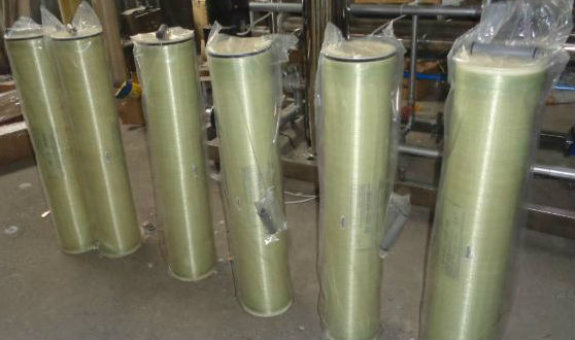Nanocomposite membranes are promising modified versions of usual or traditional polymer membranes, like ones used in water treatment with three main characteristics of increased permeation, increased rejection and reduction of impurities. Nanocomposites is applied in membrane technology to improve membrane material performance and increase membrane usability.
Membranes consist of organic substances (polymers) and inorganic substances (ceramics), although polymeric materials are widely studied because of their mechanical strength, flexibility, and chemical stability. However, the main limitation to use larger membrane technology is membrane fouling. Fouling is the process of deposition or adsorption of colloids, particles, macromolecules (eg proteins, polysaccharides), salts, etc. On the surface of the membranes and / or in the pores and pore walls. It causes a decrease in permeation flux, changes in selectivity, and separation during filtration operations and reduces membrane life. When membrane is dirty caused by the formation of biofilms from extracellular polymeric material and microbial cell matrices, it is called biofouling.
Nanocomposite membrane fabrication and modification techniques for mixed matrix membranes and thin film membranes for pressure and non-pressure driven membranes using various types of nanoparticles, such as carbon, silicon, and polymer-based materials. Furthermore, sophisticated techniques for searching nanoscale materials in various types of membranes were discussed in details. Effects of physicochemical properties of nanoparticles, type, size, and concentration on membrane intrinsic properties, such as pore morphology, porosity, pore size, hydrophilicity / hydrophobicity, membrane surface charge, and the roughness and performance of nanocomposite membranes, in terms of flux permeation, contaminant rejection, and ability anti-fouling were developed from the modification of this nanocomposite membrane.
Membrane technology involves processes such as microfiltration, ultrafiltration, nanofiltration, reverse osmosis, pervaporation, membrane distillation, dialysis, electrodialysis, gas separation, etc. The advantages of this technology over conventional separation methods are high release capacity, operating flexibility, and cost-effectiveness. Since the last two decades, synthetic membranes are being researched and commercialized for industrial and household use.
This research has carried out fabrication or synthesis of nanocomposite (SiO 2 -PVA-Gelatin) samples produced by physical methods for the preparation of SiO 2 nanoparticles. Then SiO 2 nanoparticles produced from the milling method with HEM and gelatin, whose function as fillers are added to the PVA solution that has been prepared in advance with various concentrations of concentration. After that, the molding process or printing of thin films or nanocomposite membranes is carried out by the spreading method on a smooth, flat surface. The results have been obtained and have shown characteristics as a modification of the membrane with some properties that indicate a membrane nanocomposite (SiO 2 -PVA-Gelatin).
This research will continue to be carried out to optimize the function and performance of nanocomposite membranes based on SiO 2 and polymers, including the use of PVA and gelatin. This research is expected to be applied to membrane modification to replace conventional or ordinary membrane types, such as for the use of impurity filtration processes from water treatment and dialysis with three main characteristics of increasing permeation, increasing rejection and reducing impurities.
Author: Jan Ady
Details of this research available at: https://iopscience.iop.org/article/10.1088/1742-6596/1445/1 / 012016 / pdf (To cite this article: Jan Ady et al 2020 J. Phys .: Conf. Ser. 1445 012016). “Synthesis of SiO2 – PVA – Gelatine Nanocomposite Membrane by Handling of the Gelatine.”





